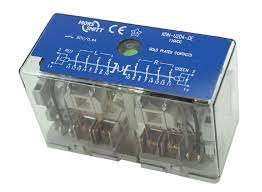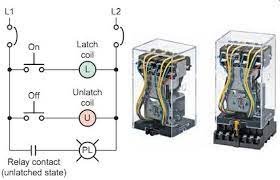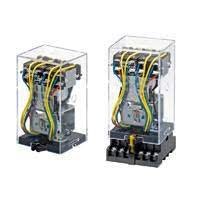Latching Relay : In Depth Overview
A latching relay is an electromechanical device that is capable of maintaining its position without the continuous application of power. There are several types of latching relays that are used in various applications. In this blog, we will explore the different types of latching relays, their differences from non-latching devices, impulse relays, the advantages of using a latching relay, what a latching device does, and latching contacts.

Types of Latching Relays
- Single-coil latching relay
A single-coil latching relay operates with a single coil that is energized in two opposite directions. When one coil is energized, it attracts the armature and closes the contacts, and when the other coil is energized, it repels the armature and opens the contacts. This type of latching relay is used in applications where power consumption is a concern.
- Dual-coil latching relay
A dual-coil latching relay operates with two coils that are energized in opposite directions to toggle the position of the armature. When one coil is energized, it attracts the armature and closes the contacts, and when the other coil is energized, it repels the armature and opens the contacts. This type of latching relay is used in applications where power consumption is not a concern.
- Magnetic latching relay
A magnetic latching relay uses a permanent magnet to maintain its position. When the coil is energized, the armature is attracted to the core, and the contacts are closed. To release the contacts, the polarity of the coil is reversed, which repels the armature and opens the contacts. This type of latching relay is used in applications where power consumption is not a concern.
- Bi-stable relay
A bi-stable relay is a type of latching relay that can maintain its position without the continuous application of power. It uses two stable states, which are determined by the position of the armature. When one state is activated, it attracts the armature and closes the contacts, and when the other state is activated, it repels the armature and opens the contacts. This type of latching relay is used in applications where low power consumption is required.

Latched Relay
A latched relay is a type of relay that can maintain its position without the continuous application of power. It uses a latching mechanism to keep the contacts in the closed or open position. A latched relay can be controlled by a pulse signal that toggles the position of the contacts. Once the contacts are in the desired position, the latched relay will maintain that position until it receives another pulse signal.
Difference Between Latching and Non-Latching Device
A non-latching device is a device that requires a continuous application of power to maintain its position. When the power is removed, the device will return to its default position. A latching device, on the other hand, can maintain its position without the continuous application of power.
The main difference between a latching and non-latching device is power consumption. A latching device consumes less power because it does not require a continuous application of power to maintain its position. This makes it ideal for battery-operated devices or applications where power consumption is a concern.

Why Use a Latching Relay?
There are several reasons why you might choose to use a latching relay over other types of relays or switches. One of the most significant advantages of latching relays is that they consume very little power. Because they remain in the on or off position without requiring continuous power, they’re ideal for use in battery-operated devices or other systems where power conservation is a priority.
Another benefit of latching relays is that they can be controlled remotely. Because they remain in the state they were last switched to, they can be used to control a device or process from a remote location. This makes them useful in automation systems or other applications where it’s necessary to control a circuit from a distance.




